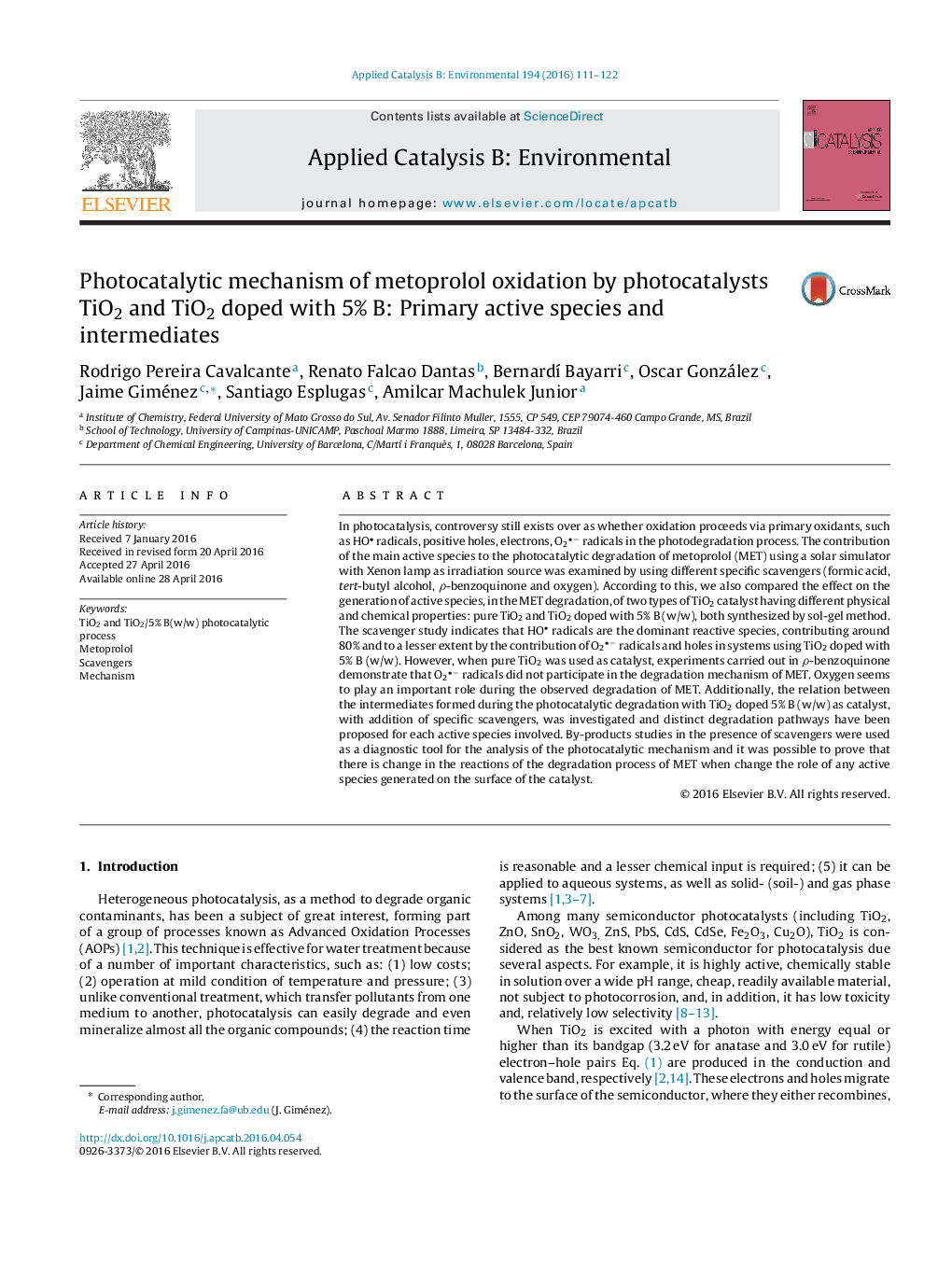| کد مقاله | کد نشریه | سال انتشار | مقاله انگلیسی | نسخه تمام متن |
|---|---|---|---|---|
| 44792 | 46353 | 2016 | 12 صفحه PDF | دانلود رایگان |

• Study of different scavengers effect on MET degradation with TiO2 and TiO2/5% B.
• Photogenerated species (O2−, h+ and HO) were detected in MET photodegradation.
• The dissolved oxygen proves to be necessary to increase the degradation rates.
• Intermediates (with scavengers) allow the analysis of MET degradation mechanism.
In photocatalysis, controversy still exists over as whether oxidation proceeds via primary oxidants, such as HO radicals, positive holes, electrons, O2− radicals in the photodegradation process. The contribution of the main active species to the photocatalytic degradation of metoprolol (MET) using a solar simulator with Xenon lamp as irradiation source was examined by using different specific scavengers (formic acid, tert-butyl alcohol, ρ-benzoquinone and oxygen). According to this, we also compared the effect on the generation of active species, in the MET degradation, of two types of TiO2 catalyst having different physical and chemical properties: pure TiO2 and TiO2 doped with 5% B (w/w), both synthesized by sol-gel method. The scavenger study indicates that HO radicals are the dominant reactive species, contributing around 80% and to a lesser extent by the contribution of O2− radicals and holes in systems using TiO2 doped with 5% B (w/w). However, when pure TiO2 was used as catalyst, experiments carried out in ρ-benzoquinone demonstrate that O2− radicals did not participate in the degradation mechanism of MET. Oxygen seems to play an important role during the observed degradation of MET. Additionally, the relation between the intermediates formed during the photocatalytic degradation with TiO2 doped 5% B (w/w) as catalyst, with addition of specific scavengers, was investigated and distinct degradation pathways have been proposed for each active species involved. By-products studies in the presence of scavengers were used as a diagnostic tool for the analysis of the photocatalytic mechanism and it was possible to prove that there is change in the reactions of the degradation process of MET when change the role of any active species generated on the surface of the catalyst.
Figure optionsDownload as PowerPoint slide
Journal: Applied Catalysis B: Environmental - Volume 194, 5 October 2016, Pages 111–122